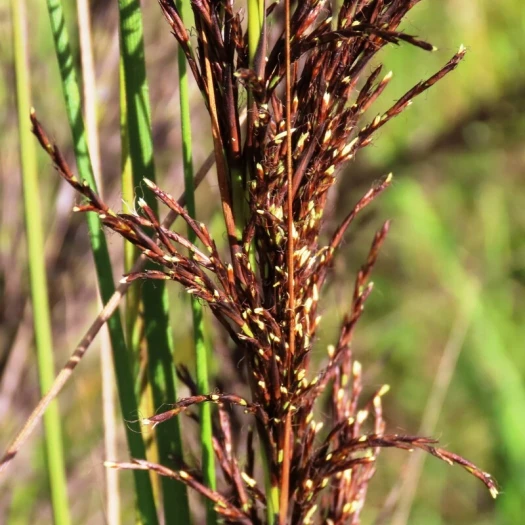Thatch Saw-Sedge
(Gahnia radula)
Thatch Saw-Sedge (Gahnia radula)
/
/

© Elspeth Swan
CC BY 4.0
Image By:
© Elspeth Swan
Recorded By:
Copyright:
CC BY 4.0
Copyright Notice:
Photo by: © Elspeth Swan | License Type: CC BY 4.0 | License URL: http://creativecommons.org/licenses/by/4.0/ | Uploader: cygnet | Publisher: iNaturalist |





















Estimated Native Range
Climate Requirements for Montpellier, France
| This Plant | Your Site | Plant Suitability for Your Location | ||
|---|---|---|---|---|
| • Precipitation | 16" - 93" | 26" | Your precipitation may be insufficient for this plant. Irrigate N" / year. | Irrigate N" / year |
| • High Temp. | 61°F - 87°F | 84°F | Your summer temperatures are normal for this plant. | Excellent |
| • Low Temp. | 29°F - 49°F | 38°F | Your winter temperatures are normal for this plant | Excellent |
This plant should grow well at your location with about N inches per year (Y minutes per month) of irrigation.
Summary
Gahnia radula, commonly known as Thatch Saw-sedge, is a tufted perennial sedge native to the understory of eucalypt forests and grassy woodlands in southeastern Australia, including Tasmania. It typically grows to a height of 20-39 inches (50-100 cm) and spreads through rhizomes. This sedge has long, rough, strap-like leaves with sharp edges that can reach several feet in length. The distinctive brown inflorescences, which darken to black as they mature, appear on tall stems above the foliage and are most notable in summer and autumn.
Thatch Saw-sedge is valued for its textural contrast in gardens and landscapes, particularly in naturalistic plantings and as a ground cover in shaded areas. It is also used for erosion control due to its rhizomatous growth habit. Gahnia radula prefers moist, well-drained soils and can tolerate partial shade to full sun conditions. While it is generally low-maintenance, it may require occasional trimming to remove old foliage and spent flower stems. It is not commonly affected by diseases or pests, but its sharp leaf edges can be a handling hazard.CC BY-SA 4.0
Thatch Saw-sedge is valued for its textural contrast in gardens and landscapes, particularly in naturalistic plantings and as a ground cover in shaded areas. It is also used for erosion control due to its rhizomatous growth habit. Gahnia radula prefers moist, well-drained soils and can tolerate partial shade to full sun conditions. While it is generally low-maintenance, it may require occasional trimming to remove old foliage and spent flower stems. It is not commonly affected by diseases or pests, but its sharp leaf edges can be a handling hazard.CC BY-SA 4.0
Plant Description
- Plant Type: Grass
- Height: 3-5 feet
- Width: 3-5 feet
- Growth Rate: Moderate
- Flower Color: N/A
- Flowering Season: Spring, Summer
- Leaf Retention: Evergreen
Growth Requirements
- Sun: Full Sun, Part Shade
- Water: Medium, High
- Drainage: Medium, Slow
Common Uses
Bird Garden, Erosion Control, Low Maintenance, Water Garden
Natural Habitat
Understory of eucalypt forests and grassy woodlands in southeastern Australia, including Tasmania
Other Names
Common Names: Cutty Grass
Scientific Names: Gahnia radula, Cladium radula, Gahnia melanocarpa, Mariscus radula
GBIF Accepted Name: Gahnia radula